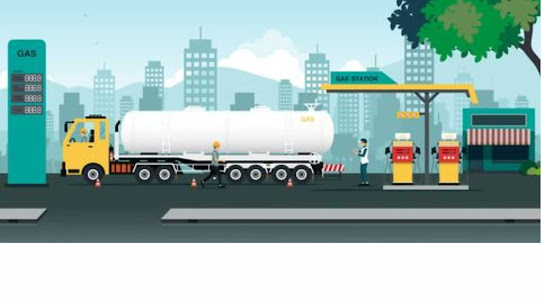Hot Fuel Stations
Welcome to our new article, where we shed light on the phenomenon of fuel pump fires during the process of unloading fuel trucks.
Learn about the essential safety
precautions that must be followed to ensure your safety and the safety of
others during fuel transportation from the truck to the station's tank. We will
explain the correct steps and provide valuable tips to avoid tragic accidents.
Join us on this short educational journey
and discover how you can be part of the solution to prevent these accidents.
Make sure to stay safe during the unloading of fuel trucks.
Safety precautions during fuel tanker
unloading, for transporting its load to the car fuel station tank.
These precautions include the following key
points:
* Close all
entrances and exits of the station and cease all activities within.
* No vehicle
movement is allowed at the station while unloading the tanker's load into the
station's tanks. Clear warning signs should be placed for that purpose.
* Secure the area
surrounding the unloading zone with barriers and safety cones, at a distance of
no less than six meters before starting the unloading process.
* The tanker must
be free from any technical defects to prevent any fuel leakage.
* Ensure access for
fuel tankers to the fuel station site, and provide clear and designated points
and locations for tanker access for unloading without any obstacles.
* The entire tanker
should be positioned within the station boundaries.
* The tanker should
be stopped in a way that allows for immediate driving out of the site in case
of any danger.
* Apply the brakes
and prevent any spontaneous movement of the tanker by placing wheel chocks.
* Fuel should be
unloaded through a metal-encased hose (PVC), which is connected to the fuel
tank with a coupling and secured with a clamp on both the tank and the tanker
side
.
* Use a quick
installation and separation system when unloading the tanker's load into the
station tank.
* It is extremely
important to connect a copper cable with an area of no less than 50 square
millimeters to the body of the fuel tanker during the fuel unloading process.
The other end of the cable should be fixed to the nearby public grounding point
for discharging static electricity.
* Inspect the surrounding
area for ventilation openings to detect potential ignition sources.
* The tanker driver and
the specialist should be present at the station during the tanker unloading
process.
* Stop the unloading
process and inspect the vent pipe line in case of fuel spillage.
* Replace the cap of each
filling pipe and the inspection chamber opening after completing the unloading
process.
* Do not store any amount
of fuel outside the designated tanks for that purpose.
Remember, we care about your safety.
"Thank you for placing your trust in us, and we eagerly anticipate your continued participation and interaction with our services."


Comments
Post a Comment